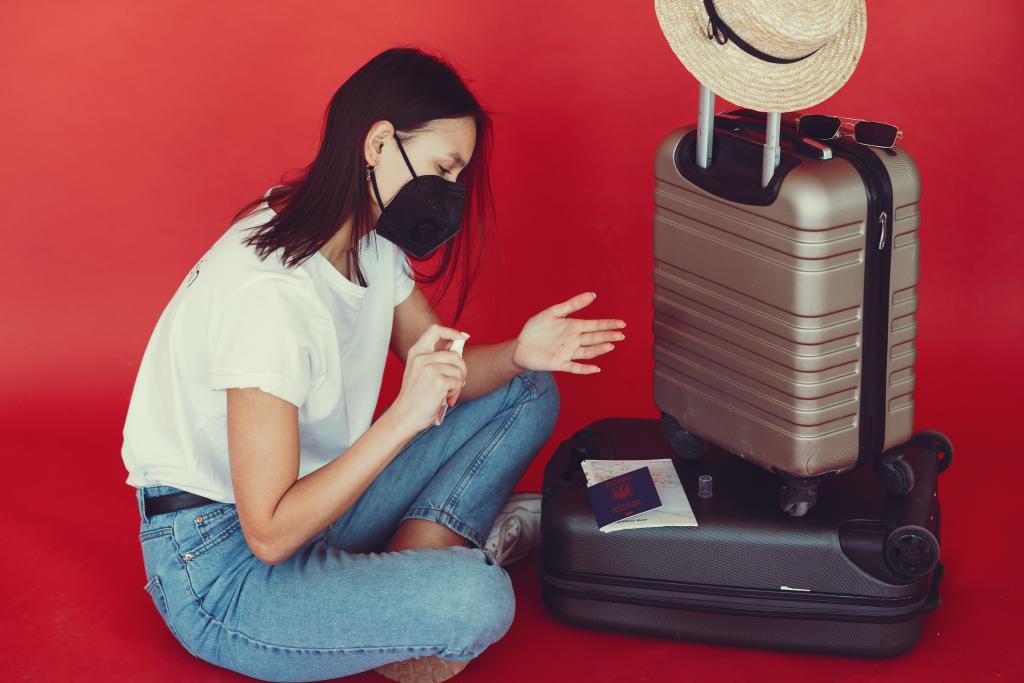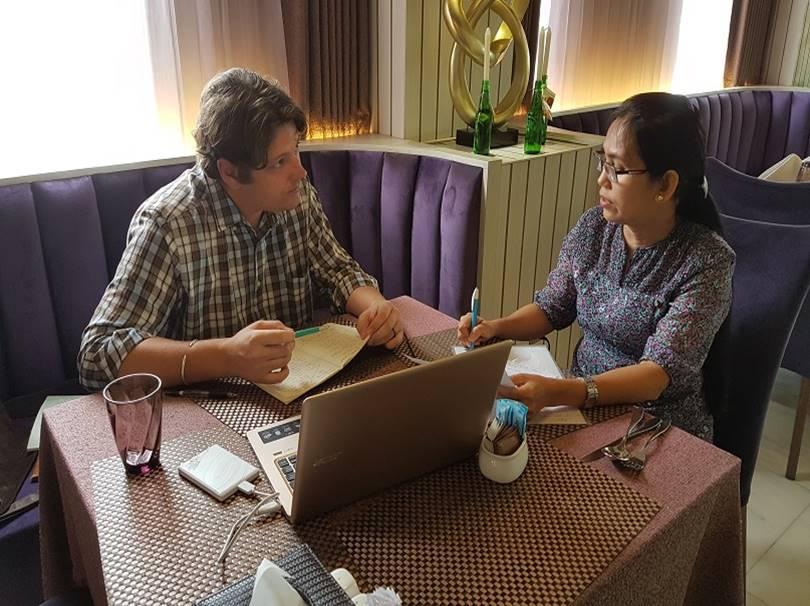Myanmar CBT and COVID-19
The ongoing global health crisis has impacted many industries, and tourism is among the hardest hit. Basically, the whole tourism industry has come to a standstill due to travel restrictions and the fear of travelling. It is unclear when travel restrictions will be lifted and economies will get a chance to recover. European markets are not expected to return to Myanmar till 2021.

At the same time, tourism providers are recommended to be ready to engage in business again. CBI has prepared a crisis manual for Myanmar tour operators (PDF) full of recommendations on how to manage your financial and human resources, and how you can strategise your company’s recovery. We also invite you to read our general recommendations for managing the catastrophic effect of COVID-19 on the tourism industry.
This exceptional challenge may bring benefit to CBT in Myanmar in the long-term, as new trends emerge. Analysis of online resources and interviews with travel professionals reveal six arising trends that will benefit CBT itineraries. For tour operators and CBT destinations in Myanmar, now is the time to capitalise on these trends and prepare innovative, unique community-based experiences to attract the European market again once travel restrictions are lifted and tourists feel safe to visit again.
1. Authentic experiences
It is expected that an interest in slow tourism will emerge. Tourists will take time to appreciate their surroundings, seek authentic local experiences, and support local businesses. It is expected that tourists will be looking for adventurous and secluded destinations that can offer them unique experiences, which is exactly what many CBT destinations are all about. It will be of key importance to highlight the authentic local experiences in your CBT itineraries and relay how the trip will benefit local businesses, families and the community as a whole.
2. Seek uncrowded places
The majority of travellers will want to avoid busy, congested places and seek out uncrowded and tranquil destinations to visit. After months of practicing social distancing, most tourists will choose remote destinations over densely populated areas. Once people can start travelling again, they will be looking for destinations that give them space and opportunities to let go, and unconstrained experiences away from crowds. Hence, less populated areas in more remote (e.g. rural) locations that offer open-air and nature-filled experiences should prove popular. Also places that strategically limit the number of people will be preferred.
Tourists will also want to avoid staying in closed environments, rather opting for small-scale or private accommodations and open-air restaurants. It is to be expected that communities that can offer independent lodging (for example a private hut or bungalow, or a detached room with private entrance) will be more appealing to tourists, rather than a homestay with a dorm-room set up.
3. Stay healthy and safe
More than ever, travellers will be focused on staying safe while travelling, especially in terms of their health. Hygienic cooking and clean bathrooms will be considered very important. In addition, tourists will appreciate a clean bedroom with freshly washed sheets, in a locally owned, small-scale place that maintains a high standard of cleanliness and responsibility.
Furthermore, tourists will appreciate not being confronted with any people (locals or other tourist) who may have a cold or fever. For instance, if someone in the family of a local accommodation provider is feeling ill, it will be better to accommodate your tourists elsewhere. The host community of a CBT destination should be prepared for these expectations. Also, tourists will appreciate nearby access to basic healthcare. As such, be sure to promote those CBT communities that can offer basic healthcare or are located in the vicinity of places that can ensure essential medication and other treatment, and clearly communicate this availability to your clients.
When preparing your CBT product, also consider the safest way for tourists to get to the CBT site. For example, ensure that vehicles used are cleaned before every use and that tourists have a way of cleaning their hands when they want (either with soap and water at a rest stop, or with hand sanitizer on the vehicle). Although public transport might make the itinerary more affordable, many tourists will likely prefer private transportation.
In return, the host community of the CBT destination may also have expectations from their visitors and specific ways in which they would like to manage their tourism. Tourists will want to feel welcome and safe, so if the community is not ready to receive tourists or wants to welcome small amounts, it is your task as a tour operator to be fully aware of this and adjust your itineraries accordingly. You will also be responsible for properly informing your clients of any expectations the community may have. Just like the community members, tourists are also responsible for maintaining the safety of the location they are visiting, but they can only do so if they have received all the information prior to their trip.
The ITC team in Myanmar is actively preparing for when tourism can gradually restart, while maintaining a strong focus on protecting the safety of community members, tourists, and the tourism staff who bring them together. With this in mind, ITC’s Myanmar Inclusive Tourism team, working in Kayah State and Tanintharyi Region joined hands with a sister ITC project, developing inspiring local experiences in Southern Shan State: the SECO – UN Cluster on Trade and Productive Capacity, Myanmar project. Together, the ITC team worked to develop new COVID-19 Guidelines for Community Visits. These simple, visual guidelines are appropriate for low literacy levels in the field. At the time of writing, Myanmar is in lockdown. Following the lockdown, ITC plans to deliver capacity building to community members, licensed tour guides and tour operators to ensure the guidelines are implemented.
4. Affordable travel
The health crisis is affecting the global economy and travellers’ decisions are likely to be more price sensitive than ever, at least for a while. While there will certainly be more tourists on a limited budget, it is also expected that travel expense decisions will be influenced by where the money goes. This relates back to tourists wanting to be sure their visit supports local businesses and benefits the community as a whole. Therefore, affordable travel should not be interpreted as low-budget per se, but tourists do like to understand why the services and activities on the itinerary cost what you quote and where the money goes (who benefits).
5. Well planned
The majority of tourists will plan their trip carefully to be sure they can travel in the safest way possible. Travel will still be about relaxation and being able to let go, but the majority of tourists will want to know exactly what to expect prior to departure.
6. Short, nearby trips before further, longer trips
It is expected that the first visitors to return to a destination will come from nearby places. This is largely due to reduced consumer confidence and the likelihood of longer restrictions on the international movement of people. As a tour operator, you may be accustomed to working with a particular market. However, to keep your business afloat it may be necessary to think about diversification. Domestic tourists and visitors from nearby countries can also be attracted to visit CBT sites. Small adjustments to itineraries may be required to cater to these markets, so it will be important to learn about their needs and expectations.
Tips:
- Keep communicating! Always respond to correspondence you receive from European or inbound tour operators and tourists at your earliest convenience. Even when you are unable to give them any information or if you need time to gather the information they ask for, just let them know in a short response that you will do your best to get back to them soon. If you can, provide them with an estimate. They will appreciate knowing that you received their communication and are working on collecting the information to respond to their queries.
- Now more than ever it is crucial that you understand in detail the demands of the markets you are targeting, and especially their expectations in terms of health and safety. Make sure to ask the European or inbound tour operators you work with about the particular requirements of the markets, such as their travel budget, desired modes of transportation and style of accommodation, as well as any specific concerns they may have in terms of specific destinations and Myanmar as a whole in light of the COVID-19 health crisis. This way, you can also prepare the information these tourists will want to receive in advance of their trip.
- Be aware that general market trends may provide you with sound information to develop suitable itineraries and clear marketing messages, but individual tourists may still have different requirements or concerns. It is therefore recommended to inform about these specifics once a booking has been made, to be able to tailor the trip where needed and ensure a positive and healthy experience for the individual tourist.
- Be honest about the situation. Make sure that you are well aware of the current situation and wishes of the host community of the (CBT) products and destinations you are selling. This means you also need to accept if a community does not want to receive tourists, or if they set limits to the numbers of visitors they can receive. Communicate this in all honesty to the European tour operators you collaborate with. In turn, also be honest to the community about the current state of business; if you cannot bring clients, or are planning on tapping into different markets than your usual, it is better to inform the community up front.
- Stay informed on the trends in Community-Based Tourism and How to manage risks in tourism via the CBI Market Intelligence platform and the CBI YouTube Channel.
This study was carried out on behalf of CBI by Marjorie van Strien, ECEAT
Please review our market information disclaimer.
Search
Enter search terms to find market research

